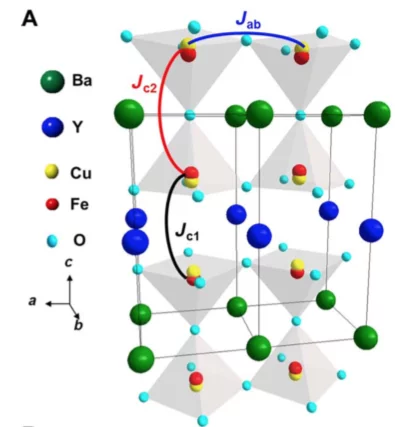In insulating materials with ordered magnetic spiral phases, ferroelectricity can emerge owing to the breaking of in- version symmetry. This property is of both fundamental and practical interest, particularly with a view to exploiting it in low-power electronic devices. Advances toward technological applications have been hindered, however, by the rel- atively low ordering temperatures Tspiral of most magnetic spiral phases, which rarely exceed 100 K. We have recently established that the ordering temperature of a magnetic spiral can be increased up to 310 K by the introduction of chemical disorder. Here, we explore the design space opened up by this novel mechanism by combining it with a targeted lattice control of some magnetic interactions. In Cu-Fe layered perovskites, we obtain Tspiral values close to 400 K, comfortably far from room temperature and almost 100 K higher than using chemical disorder alone. Moreover, we reveal a linear relationship between the spiral’s wave vector and the onset temperature of the spiral phase. This linear law ends at a paramagnetic-collinear-spiral triple point, which defines the highest spiral ordering temperature that can be achieved in this class of materials. On the basis of these findings, we propose a general set of rules for designing magnetic spirals in layered perovskites using external pressure, chemical substitutions, and/or epitaxial strain, which should guide future efforts to engineer magnetic spiral phases with ordering temperatures suitable for technological applications.
Reference: T. Shang et al, Science Advances 4, eaau6386 (2018)
Read full article: here


